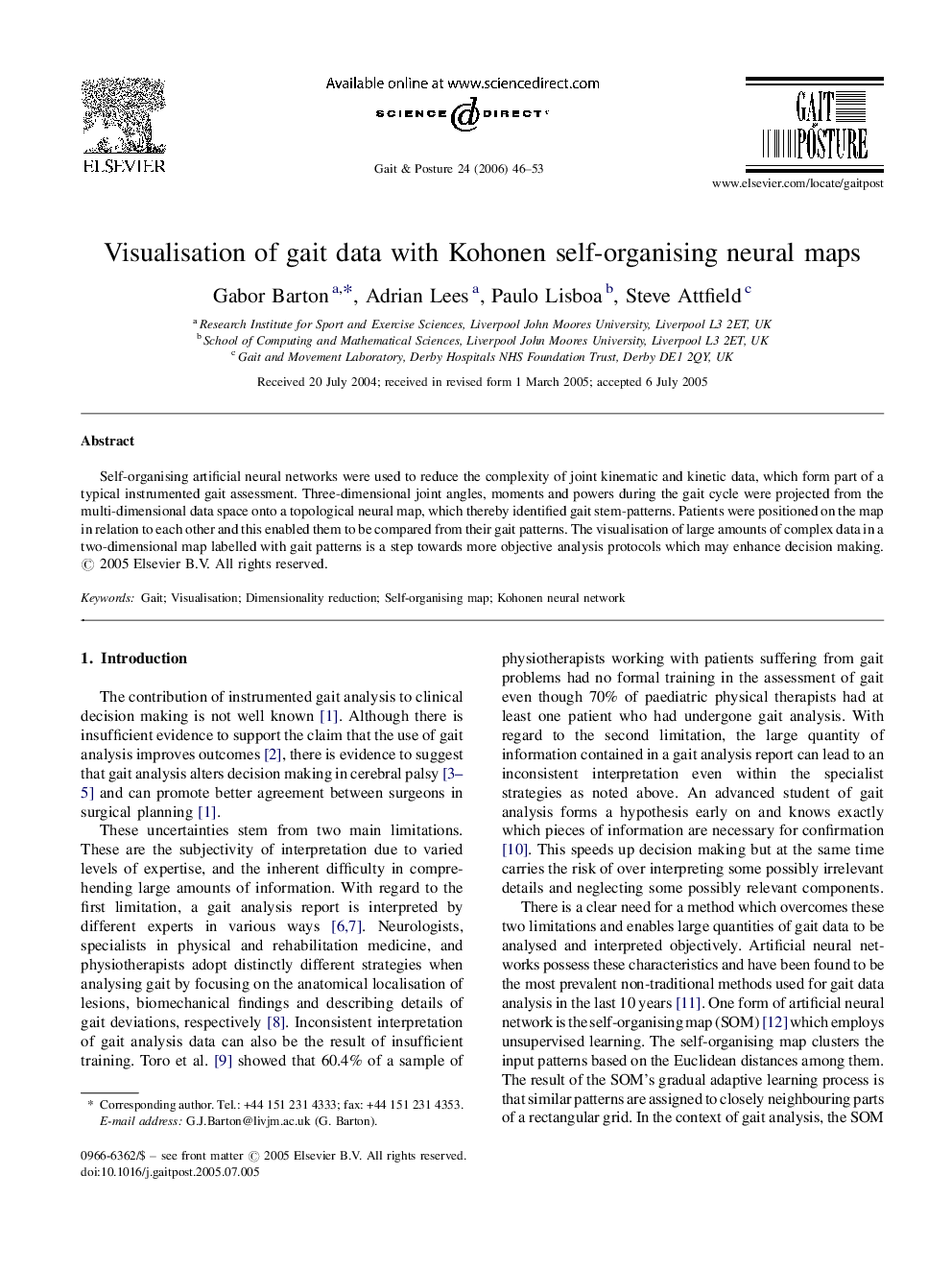| Article ID | Journal | Published Year | Pages | File Type |
|---|---|---|---|---|
| 4058697 | Gait & Posture | 2006 | 8 Pages |
Abstract
Self-organising artificial neural networks were used to reduce the complexity of joint kinematic and kinetic data, which form part of a typical instrumented gait assessment. Three-dimensional joint angles, moments and powers during the gait cycle were projected from the multi-dimensional data space onto a topological neural map, which thereby identified gait stem-patterns. Patients were positioned on the map in relation to each other and this enabled them to be compared from their gait patterns. The visualisation of large amounts of complex data in a two-dimensional map labelled with gait patterns is a step towards more objective analysis protocols which may enhance decision making.
Related Topics
Health Sciences
Medicine and Dentistry
Orthopedics, Sports Medicine and Rehabilitation
Authors
Gabor Barton, Adrian Lees, Paulo Lisboa, Steve Attfield,
